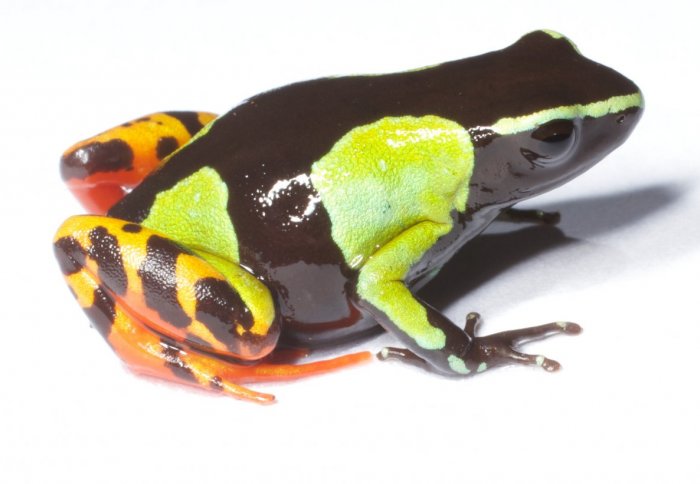
Mantella baroni. Photo: Brian Gratwicke/Flickr

A deadly fungus that has ravaged frog populations across the globe has been detected in Madagascar, prompting fears for hundreds of native species.
Batrachochytrium dendrobatidis (Bd), one of a group of fungi called chytrids, produces spores that travel through the air and infect amphibians’ skin. It has already caused the precipitous decline of frog populations in Central America, Australia, the western United States, Europe and east Africa.
Madagascar is home to about four per cent of the world’s amphibian species. The discovery of the fungus there, documented in the journal Scientific Reports, has spurred conservationists to protect the island’s biodiversity.

A researcher swabs a Mantidactylus frog to test for Bd.
An international team of experts screened more than 4,100 amphibians across Madagascar and confirmed the presence of Bd in five locations. The researchers detected the fungus as early as 2010 in Madagascar’s remote Makay Massif.
Professor Matthew Fisher, from the School of Public Health at Imperial College London, is currently working on determining whether the fungus they have detected belongs to the same deadly lineage that is threatening to cause the loss of more than one third of the planet’s amphibians. “Our initial results show that the type of Bd on Madagascar is very similar to the deadly lineage that has emerged worldwide, but more work needs to be done to confirm this finding,” said Professor Fisher, who co-authored the paper.
With an estimated 500 species of frogs at risk, nearly all of them exclusive to Madagascar, scientists from Imperial and the Zoological Society of London (ZSL) are researching the origin of the fungus on the island and how it affects its unique inhabitants.
Gonçalo M. Rosa, co-author and researcher at ZSL, said: “For several years Madagascar was thought to be a chytrid-free area, but these findings may suggest that the fungus has been present for a while and not exclusively as a result of recent introduction, as we have seen in places such as Europe or Montserrat.
“We are still trying to figure out whether these findings could be as devastating to Madagascan amphibians as it has been in other regions, or if they have been living with the fungus for years. This would be a more optimistic scenario.”
“ZSL is actively researching how to mitigate the impact of Bd. It’s essential to take the lessons learned from other places that have been severely affected by this pathogen in order to help us safeguard the future of Madagascan amphibians.”

All photos courtesy of Brian Gratwicke on Flickr.
Reference
Molly C. Bletz et al. ‘Widespread presence of the pathogenic fungus Batrachochytrium dendrobatidis in wild amphibian communities in Madagascar.’ Scientific Reports, 2015. DOI: 10.1038/srep08633
Article text (excluding photos or graphics) available under an Attribution-NonCommercial-ShareAlike Creative Commons license.
Photos and graphics subject to third party copyright used with permission or © Imperial College London.
Reporter
Sam Wong
School of Professional Development

Contact details
Email: press.office@imperial.ac.uk
Show all stories by this author













Leave a comment
Your comment may be published, displaying your name as you provide it, unless you request otherwise. Your contact details will never be published.